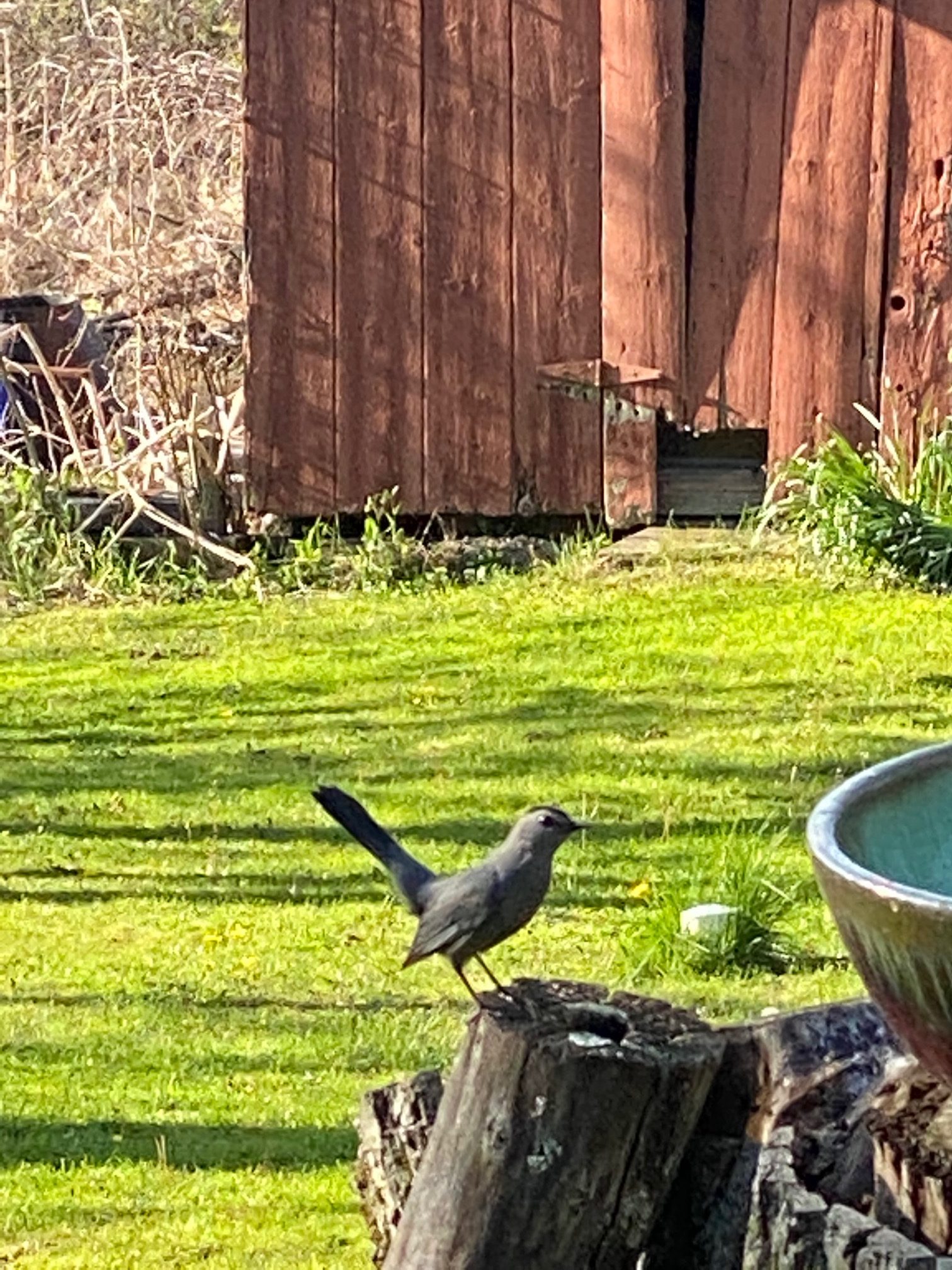Catbird – Photo: L. Weikel
Long Sips of Water
I made a point this morning of making sure the birdbath in our yard was filled with fresh, cold water. While the feeders in our yard were visited only sporadically, the ol’ watering hole attracted more attention than it usually does. I have to admit it made me smile to see so many Goldfinches and Blue Jays luxuriating in taking long sips of water.
One thing I learned today? It’s a sure thing the songbirds are thirsty when they’re at the bird bath and don’t seem to pay a whit of attention to the Red-shouldered Hawk screeching in the field beside the house. (Which also makes me wonder: do hawks stay hydrated by eating plump songbirds? Yikes.)
Beyond taking risks that they rarely dare, it’s clear to me that our feathered friends are feeling the effects of the oppressive heat and humidity. I don’t know about you, but dogs and cats make their discomfort in the heat fairly obvious. Birds generally do not.
So it was a little creepy to see some finches and woodpeckers standing on the feeder posts with their beaks open. I assumed this was the closest thing to panting birds do. But it was unsettling. I kept wondering if maybe I’d just never paid close enough attention to my birds in the summer.

Goldfinches – Photo: L. Weikel
Worrisome News
Just as I was talking out loud to my birds (and grudgingly acknowledging the presence of the gray squirrels, red squirrels, and chippies), I came across this unsettling article. It seems birds are dying in record numbers in states all around us as well as further to the south, and scientists have yet to figure out what’s happening.
Sadly, the speculation is that it may either be a disease or perhaps the use of pesticides to kill off the Brood X Cicadas. The thought of that makes me want to scream in frustration. First of all, I cannot understand why anyone would be trying to kill the cicadas. There’s so much literature readily available on the nature of the cicadas and how they benefit virtually every part of the ecosystem.
Second of all, it’s bad enough that people want to kill these red-eyed whirring wonders simply because they’re noisy, or inconvenient, or ‘scary looking.’ But to do it with poison? When people know (or would know if they stopped for even half a second to think about it or read anything on the subject) that other animals eat cicadas? Do they really forget that there’s something called a food chain in healthy ecosystems? Is it really so hard to think beyond our own very personal, very self-centered
Moving Forward
I’m writing about this today not in an effort to shame those people who either don’t care about cicadas or actively dislike them enough to aggressively try to kill them, but rather to alert us all to the need to keep an eye on our birds.
There are some suggestions at the end of the article on what to do if you find a dead bird. Working together perhaps we can be a part of the solution to the crisis.
It seems we’re screwing things up pretty well via climate change. The least we can do is help our fellow creatures out by providing clean fresh water, especially in this searing heat, and taking care not to poison them. A low bar indeed.

Blue Jays are susceptible – Photo: L. Weikel
(T-151)
